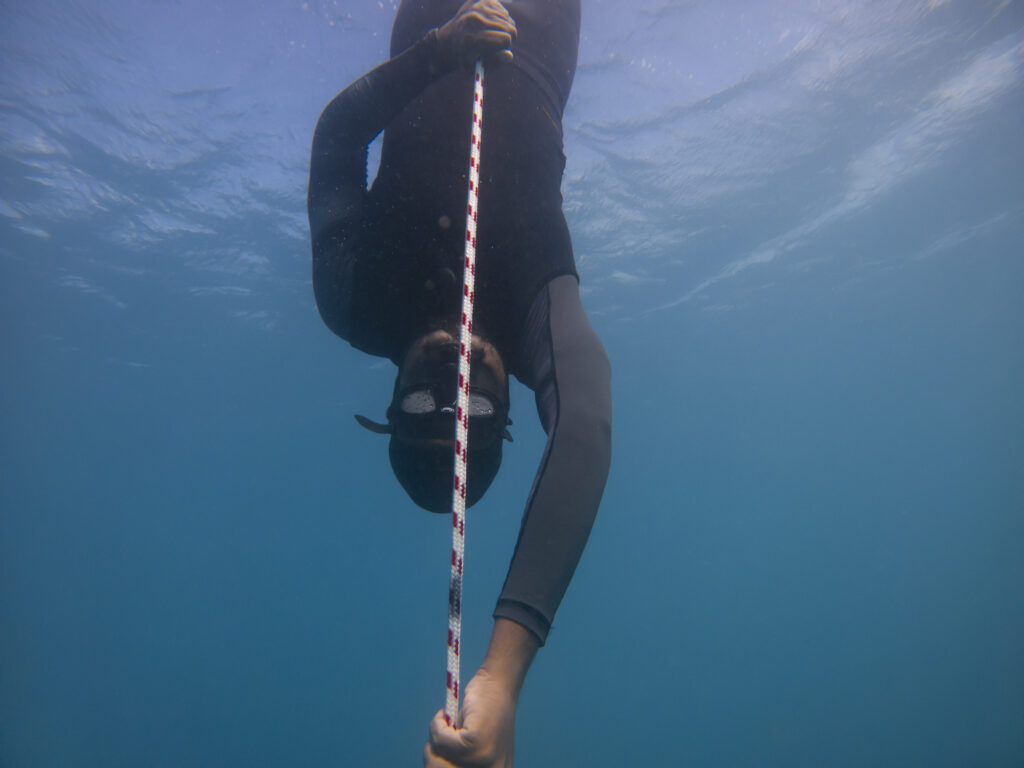Eating My Wings To Make Me Tame (How Restricted Depths Turned Me Into a Master of Ear Equalization)
When I returned to Mauritius in 2018 after intensive freediving training in Bali, I knew I was going to face two big challenges to continue progressing on my freediving journey – finding a buddy to train with (which was quickly solved when I met online a very trusted and dedicated freediver who also trained in Asia), and access to respectable depths.
The village of Mahebourg in Mauritius, with Blue Bay beach only a few minutes away, with its stunning sandy beach and year-round calm lagoon, was my home, but it lacked the deep dive sites I had become accustomed to in Bali. Initially, I felt a bit frustrated, but little did I know that this setback would lead me down a path of discovery and mastery in the art of ear equalization, and at the same time turn me into an even more knowledgeable teacher.

Discovering Opportunity in Limitation.
For most dedicated freedivers, once you have mastered the fundamentals of freediving like relaxation and basic ear equalization, quite often your primary focus will be on increasing depth (even if this in itself will not necessarily turn you into better teacher if you are one). In Bali, I had easy access to 40 m sites, with just a few meters swim away from the shore. Freediving in Blue Bay, I was confronted with depths that barely scratched the surface in comparison.
Instead of being discouraged, I decided to view this limitation as an opportunity to train in other aspects of my freediving and get the best out of what my environment was providing me with. I knew that ear equalization was the key to freediving deeper, and I was determined to unlock its secrets.
The Quest for Ear Equalization Mastery.
Over the years, I delved into the world of equalization with unwavering dedication. The limited depths of Blue Bay in Mauritius served as my testing ground, pushing me to find creative solutions to the challenges I faced. I started freediving on empty lungs (on residual volume, not FRC), studied different methods, and discovered that there was a multitude (and more efficient) of ears equalization techniques beyond the ones taught in most freediving courses, and experimented relentlessly.
As time passed by I began to master multiple equalization techniques, each with its nuances and advantages. The Frenzel maneuver with its different tongue locks (and without tongue locks), the Mouthfill technique with all its confusing mechanics, Aaron Solomon’s Cheekfill (which I learned only through his video on deep equalization) and even the BTV also known as the hands-free equalization, all started to have no secrets to me.
Teaching the Art of Ear Equalization.
As my proficiency in equalization grew, I realized that freediving courses regardless of the level barely scratched the surface when it came to ears equalization techniques. Teaching these specialized equalization techniques became my passion and mission. I developed a comprehensive curriculum, drawing from my own experiences and learnings. I started offering workshops and training sessions specific to ear equalization, sharing the invaluable knowledge I had gained over the years.
Transformation as a Freediver and Teacher.
In the world of freediving, where depth is often the primary focus, freediving in Mauritius, with its restricted depths has transformed me not only as a freediver but also as a teacher. I understood the nuances, frustrations, and breakthroughs that students faced because I had been there myself, and it turned me into a more effective and knowledgeable instructor in a market that is slowly getting saturated by under-trained freediving instructors who seem more interested in chasing dolphins and whales than improving themselves and their pedagogy.
This chapter of my life is another testament to the idea that sometimes, the greatest lessons come from the most unexpected places, and limitations can be the catalyst for growth.
